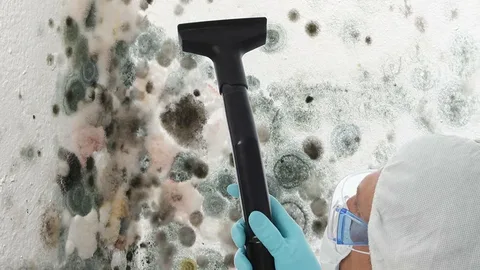What Are the Best Methods for Canberra Vent Mould Removal?
Mould development in vents is a widespread problem in most homes and companies, particularly in humid areas. If not treated, it can distribute spores in the indoor environment, causing health issues and bad odors. Effective mould removal from vents involves cleaning, moisture control, and preventive actions. Some of the most effective ways to remove mould from vents in Canberra are discussed below.
1. Find the Source of Moisture
Mould grows in moist and humid environments, and so it is important to find out the source of moisture prior to initiating the removal process. The most common causes are condensation, excess indoor humidity, or air duct leaks. Utilizing a moisture meter or simply looking for visible water buildup can determine areas of concern. Dampness elimination and ventilation enhancement are two most crucial steps to avoid mould regrowth in the future.
2. Turn Off the HVAC System
There are a number of cleaning products that can be used to clean mould from vents successfully. Some of the most popular ones are:
White Vinegar: A non-toxic and natural product that kills mould and inhibits regrowth. Spraying pure vinegar within the vents and allowing it to stay for an hour before wiping it off can be successful.
Hydrogen Peroxide: For its antifungal nature, hydrogen peroxide (3%) can be sprayed on mould surfaces and washed off after a few minutes.
Baking Soda Solution: Baking soda mixed with water forms a mild yet potent cleaning solution that not only dissolves mould but also absorbs moisture.
Commercial Mould Cleaners: Non-toxic, mould-specific cleaners are also available for thorough cleaning to ensure spores are removed properly.
4. Scrub and Clean Vents
Gently scrub off the mould with a soft-bristled brush or cloth, after using cleaning solution on vents. Vacuum, equipped with HEPA filter, can also remove loose particles of mould and avert them getting airborne. Remove any remaining wetness by drying the vents off with a towel after they're cleaned.
5. Replace or Clean Air Filters
Mould spores can collect on air filters, and it is therefore important to replace or clean them following mould removal. Antimicrobial high-efficiency filters prevent additional mould growth and enhance indoor air quality. A consistent check and filter replacement ensures that the HVAC system is clean and efficient.
6. Enhance Ventilation and Humidity Control
Humidity control is important in avoiding the recurrence of mould. Dehumidifiers, exhaust fans, or air purifiers can be used to keep indoor air clean. Humidity levels below 60% lower the chances of mould growth in vents and other places.
Regularly opening windows, using ceiling fans, and ensuring proper airflow in rooms can also prevent moisture buildup. For homes with persistent humidity issues, upgrading insulation around ducts may help reduce condensation inside vents.
7. Schedule Regular Inspections
Regular checks and servicing of the HVAC system will catch the earliest warnings of mould infestation. The ventilation units must be inspected for signs of condensation, unusual odours, or sight of mould.
Final Thoughts
Vented mould can adversely affect indoor air quality and pose health hazards, which means removal must be done properly. It is possible to prevent repeated growth of mould by detecting the source of moisture, applying proper cleaning solutions, and controlling humidity. Proper maintenance and improvement of ventilation can also decrease the possibility of mould growth, making indoor environments safe and comfortable.
Taking proactive measures ensures vent mould is properly removed and does not come back, providing a healthier environment for all.

.jpg)
.jpg)
Comments
Post a Comment